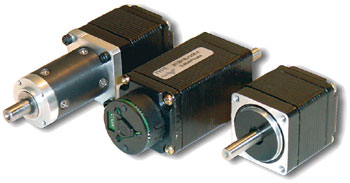When we want to motorize a robot, two main solutions are open to us: the DC motor, used alone or in a converted radio-control (RC) servo system, as explained elsewhere in this issue; and the stepper motor. Although the DC motor is very suitable for everything to do with propulsion, the stepper motor is more suitable when it comes to performing precise positioning, as required for a robot arm, a sensor moving in one plane, etc.
But while controlling a DC motor is relatively simple (it turns as soon as it is powered), controlling a stepper motor is a little more tricky. They only turn when their various windings receive pulses, which have to be presented in a quite specific order to make the motor turn one way or the other.


Discussion (0 comments)